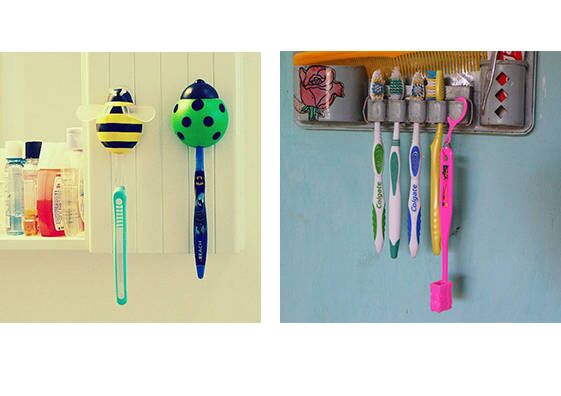Whenever you see a poor person’s home, you usually see the entire family standing in front of it. You may somehow be so captivated by seeing all those people that it’s difficult to realize what life is like for them.
This is why it’s good to create a baseline image. This may be used in conjunction with a world map as a baseline to help everyone comprehend. especially on how the globe looks on a global level. Most specifically, when it comes to maintaining good oral health.
The toothbrush of the family
If you ask someone in rural India living on a dollar or two a day how they brush their teeth, they might raise a finger. Others may choose a twig. A family might share an old toothbrush if they have a bit more money. So, every member of the family might have an electronic toothbrush. Perhaps, even in their bathroom.
Furthermore, a Liberian family shows off their household’s single, communal toothbrush. The same plastic toothbrush could be seen traveling fairly far into really impoverished families. The main distinction was the number of toothbrushes a family could buy.
The tendency among families is to go from having no plastic toothbrushes to having one plastic toothbrush each. This eventually leads to having several plastic toothbrushes. Everyone does it. Yet, a motorized toothbrush in Sweden, at the top end of the wealth scale, looks considerably different.
Especially when compared to a lady brushing her teeth with her fingers in Malawi. According to them, it’s a great way to discover how much money you can spend. This is why, at the end of the day, it’s easier to imagine yourself in a different situation. So, you could understand. Especially if you haven’t experienced it yet.
An improvised toothpick
A family in Burkina Faso, West Africa, proudly displays a discarded toothbrush. At first glance, it may appear to be an ordinary twig. You can see where the branch is cut off; it’s lighter and cut off in a way that makes it appear more like a toothpick. A sharpened stick can be a good alternative for a family that cannot afford a plastic toothbrush.
They’re picking in between their teeth and scraping on top of their teeth.
If there’s no plastic, there aren’t any bristles.
It’s a frequent reaction among the 1.2 billion people living on less than a dollar each day. They used the hut’s mud walls as toothpaste. Also, keep in mind that the mud includes abrasive particles, which they use to scrub dishes and clothing.
A toothbrush that is manufactured to order
This toothbrush holder in a Vietnamese home is fascinating. Simply because as we get closer to the top income bracket, we have all these different toothbrushes. Flashy toothbrushes disclose the family’s purchasing ability. They revealed that they can afford a range of designs geared to adults, children, or personal tastes.
A neat stack
Brushes are strategically piled on top of a plastic chair by a family in the Philippines. The fact that they have a spare chair for storage, as well as the cleanliness of the plastic surface, is a telling sign of wealth. They probably don’t have a mud floor or mud walls. since they wouldn’t be able to keep their chairs this clean otherwise.
An ingenious shelf system
In Nepal, a family slides a toothbrush into the wall handle-first, allowing the bristles to dry in the air. It is a popular storage solution in sparsely furnished dwellings. Even though the wall isn’t flawless, you come up with inventive ways to keep the toothbrushes clean. That’s a very sophisticated shelf arrangement, and we see it all around the world except in Europe.
The apex of personal space
It’s like the high standard for tooth brushing. Although you can replace the top section, the toothbrush part, and use the same handle, most people have enough money to buy one piece each and save the inconvenience. The lack of children’s toothbrushes in the restroom is even more telling. Parents aren’t brushing their teeth in the same room as the kids anymore, so they can have a more elegant atmosphere for the grownups. The perfume bottle, for example, does not need to be kept out of reach of youngsters. For the 1.2 billion people who still consider a single, plastic toothbrush an unattainable luxury, it’s an unthinkable style choice.
How can toothbrushes be used to break down inequalities?
Oral health education
There must be a campaign that educates youngsters aged 6 to 13 from underserved communities. They must know about the importance of excellent oral health. Also, it must be demonstrated that proper tooth brushing techniques are used. Dentists who had a lot of fun at the event were able to break down geographical and social barriers as well as make the event fun for everyone.
Maintain a positive attitude among children
The campaign’s success was reported in the local press and promoted on the company’s social media channels. According to the event’s organizers, they have found the most rewarding part of the event. It was watching the kids’ excitement and thanksgiving for what they had.
Final Thoughts
Remember, periodontal diseases can travel to certain other areas of the body. Especially if improper hygiene isn’t implemented. In fact, in a recent report, more and more are linking gum disease to overall health issues. Gum disease has been linked to cardiovascular disease, diabetes, and some types of cancer.
That is why dental health should be given immediate action. Not only in areas with people who already know it. But also, to those places whose oral hygiene isn’t that implemented yet because of a lack of budget for buying those. They must be given oral health education so they will be aware that the government must also join hand in hand in doing so.
If that happens, then proper hygiene will no longer be a problem for each one of us.
